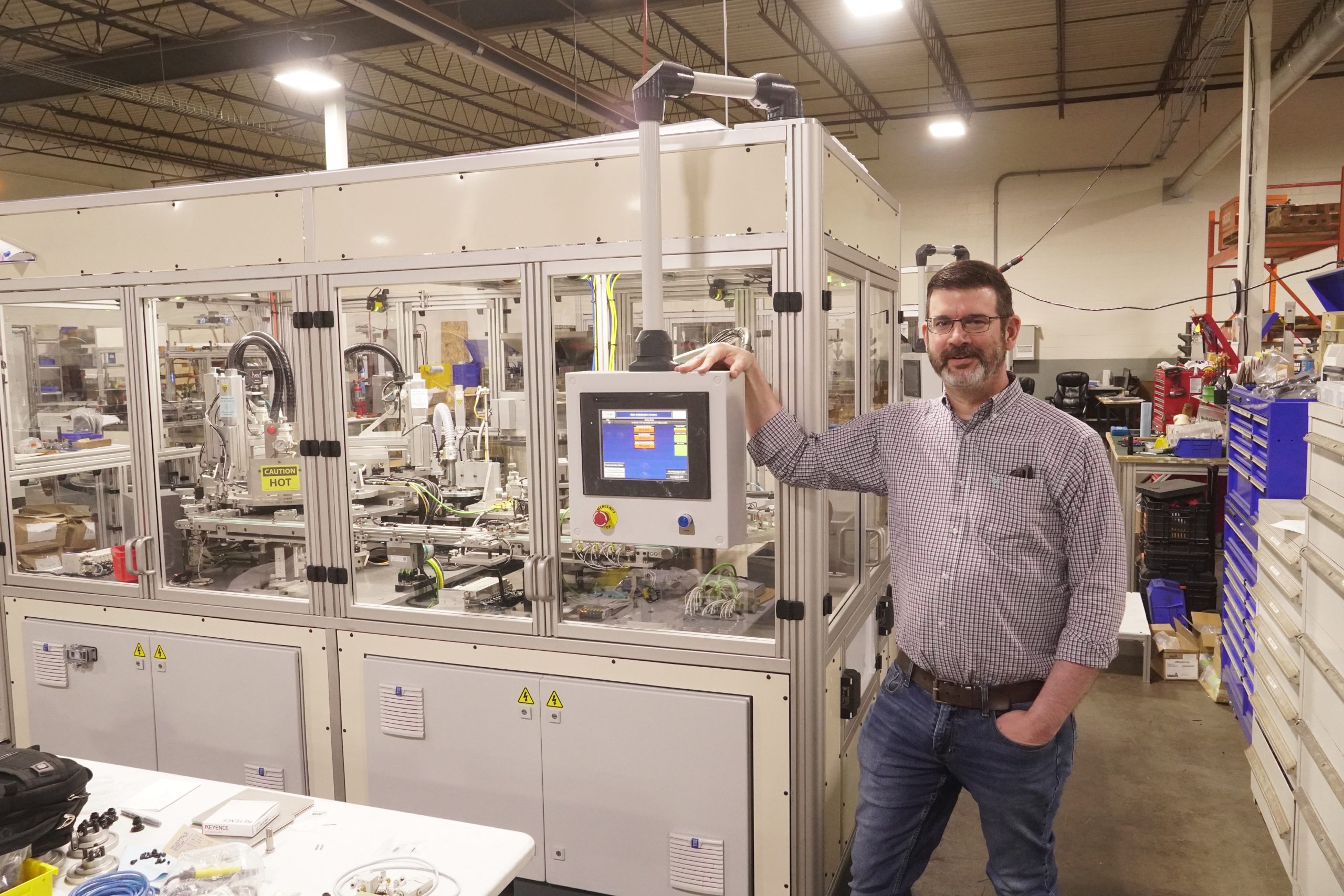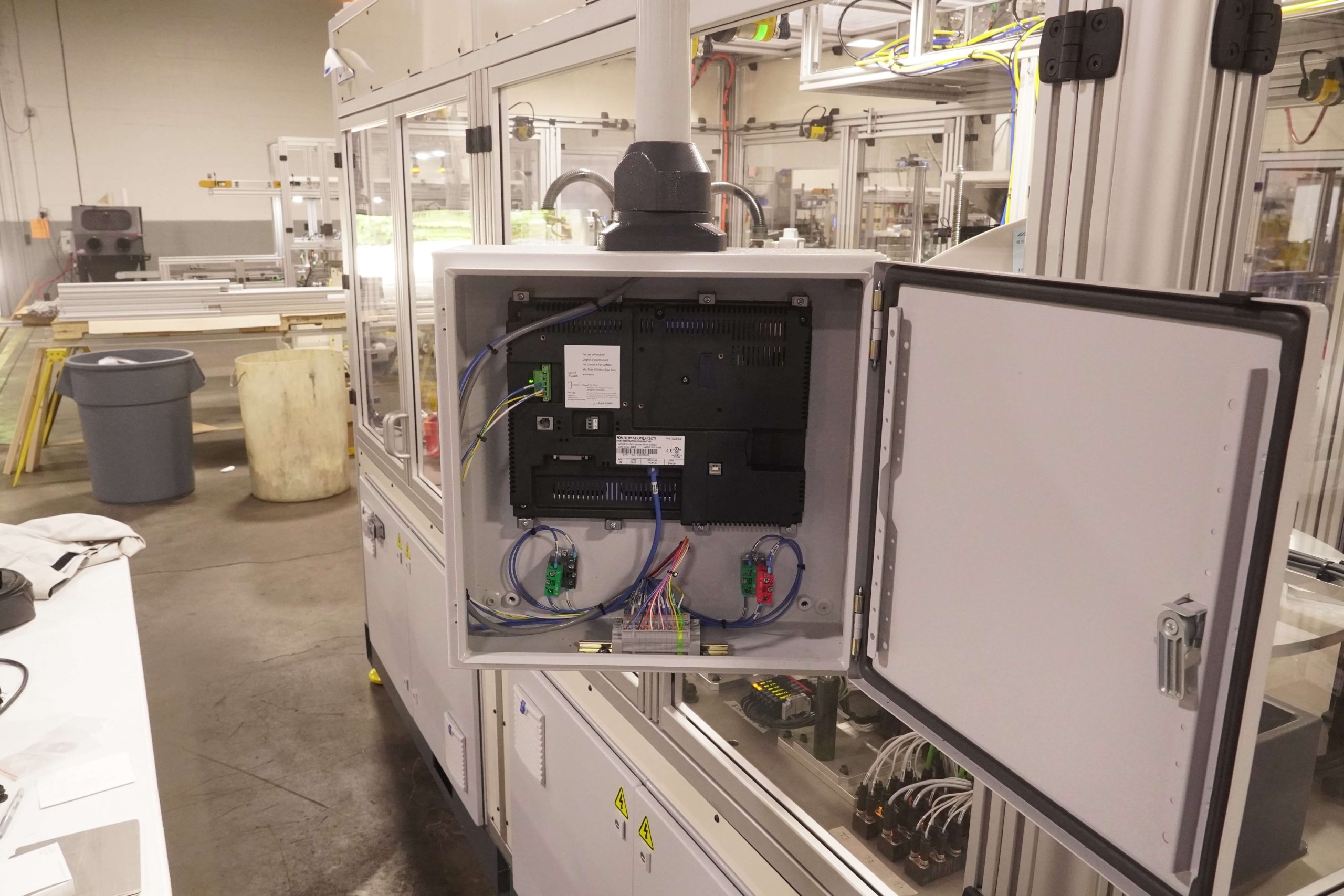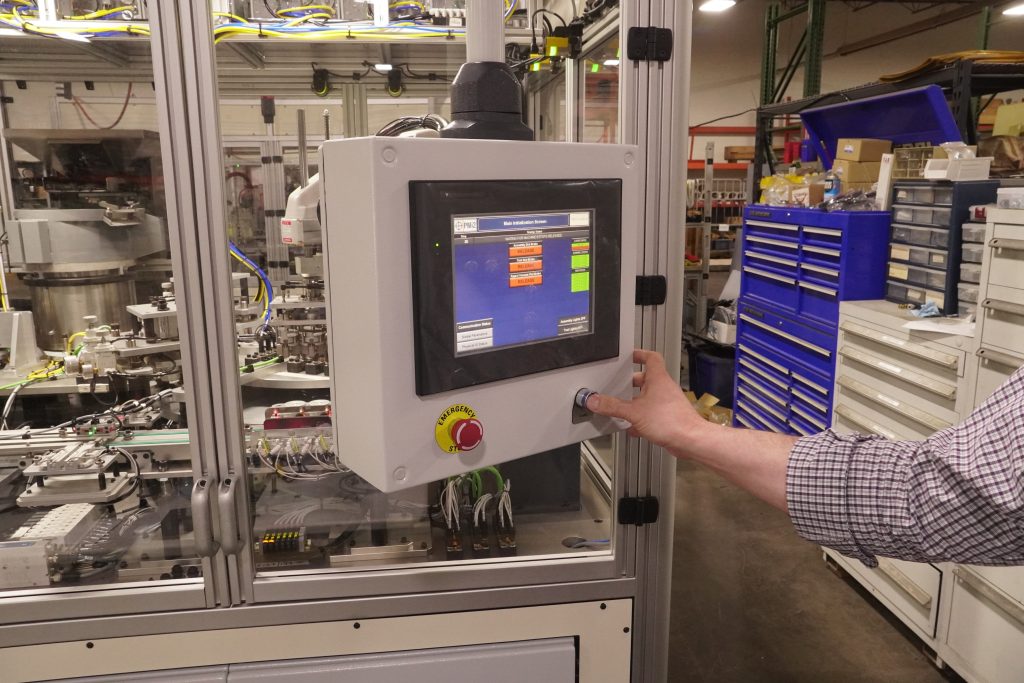This OEM systems integrator has standardized on a common touchscreen user interface, improving their ability to create automated equipment for their clients.
While automated equipment ideally runs itself, there remains a need for humans to interact with machinery for setup, monitoring, troubleshooting, and more. This role was once fulfilled by buttons, switches, lights, and the like, but today these interactions have largely been superseded by touchscreen human-machine interfaces (HMIs). Eric Cline, owner of a machine services shop that is also an OEM equipment manufacturer and systems integrator (SI), has experienced the transition to digital HMIs firsthand.

Standardization streamlines and optimizes OEM equipment automation, and PMi2 has found great success by standardizing on AutomationDirect HMIs. He writes about this approach and the benefits in a Machine Design June 2025 article titled Standardized HMIs Streamline Custom Automation Equipment.
Seeking Standardization
PMi2 follows an ISO9000-registered process for the design and manufacturing of production machines, testing/inspection gear, robotics, and more, serving diverse industry sectors. Their client base usually specifies which programmable logic controller (PLC) make/model must be used, but most of their clients will accept PMi2’s choice for an HMI.
PMi2 aims to streamline workflows and optimize projects by using standardized components. PMi2 has developed a template for hardware and software design, allowing them to eliminate some early design decisions. This standardization simplifies bill of materials development and saves labor hours.

One HMI for Many Machines
Based on years of positive hands-on experience, PMi2 has standardized on AutomationDirect C-more series HMIs, which are compatible with various PLC brands and are available in multiple form factors, even a headless version. The HMIs are compact and can be installed in many challenging locations. The intuitive HMI hardware and software require minimal support, with online manuals and technical videos readily available.
As a developer, PMi2 can now create and curate typical HMI objects, reusing and improving them. From the perspective of PMi2’s customers, HMI standardization reduces the need for spare parts and accelerates the learning curve for engineers, maintenance personnel, and operators. Freely downloadable software tools prevent downtime caused by licensing issues, and AutomationDirect’s online pricing and stock interface provide clear guidance on part availability.

PMi2 also integrates remote machine control via the C-more Remote HMI app, enabling users to monitor and control operations from anywhere with network/internet access. At many sites, users carry inexpensive tablets with a ruggedized case so they can interact with the HMI as they move about the equipment. While there remains a need for traditional pushbuttons for things like starting, stopping, and emergency stops, a standardized HMI solution provides extensive benefits for both developers and end users.
Supporting Long-Term Relationships
Standardization supports PMi2’s business growth and long-term relationships with clients.
Standardized HMI solutions have enabled PMi2 to meet user requirements in a timely and cost-effective manner while delivering high-quality, reliable machinery, and the company looks forward to increased growth and success in the future.
The labor and materials savings realized by standardizing on AutomationDirect HMIs are significant, especially for large production runs. PMi2 also relies on a wide range of other products from AutomationDirect, ensuring timely and cost-effective solutions. Standardized HMI solutions have helped PMi2 deliver high-quality, reliable machinery, contributing to their success and growth.
AutomationDirect offers many sizes of HMI, and a full portfolio of other operator interface devices, to help OEMs enhance their equipment designs.

